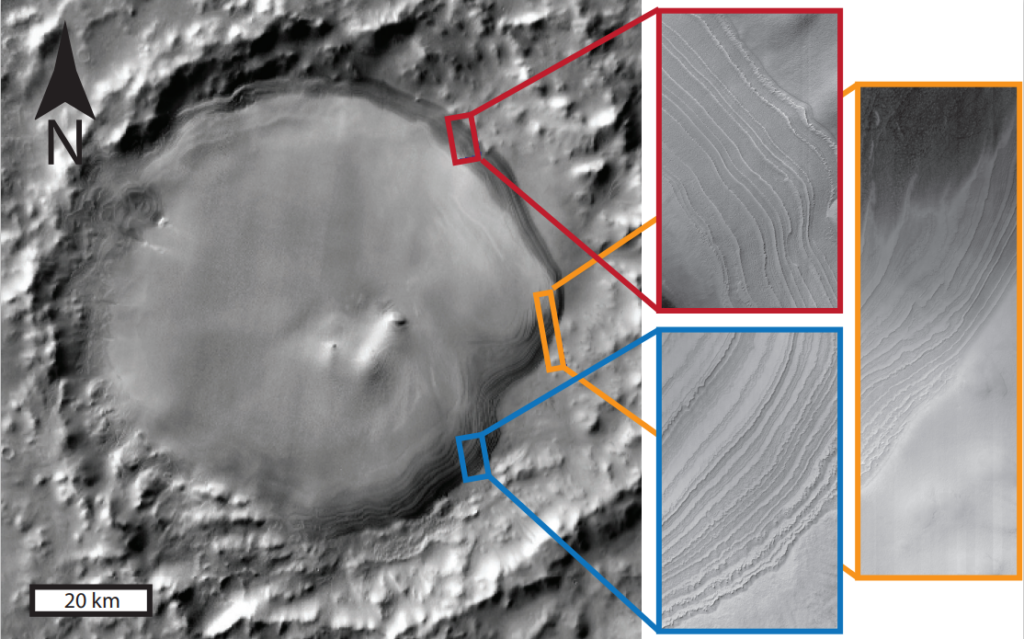A study by Purdue University in Indiana believes that newly discovered deposits of layered ice in craters scattered around Mars’s southern hemisphere provide insights into how the planet’s orientation controlled its climate over the past four million years.
According to the researchers, the findings help to understand what controlled Mars’s past climate, which is essential for predicting when the planet could have been habitable.
Ice deposits on Mars reflect a combination of temperature, hydrology and planetary dynamics, as they do on Earth. The planet’s tilt and orbit impact temperature and sunlight on the surface, which contribute to climate. Thicker, more pure ice layers generally reflect cold periods with more ice accumulation, while thin, dusty layers were likely warmer and less able to build up ice.
The new study matches these ice layers to the tilt of Mars’s axis and its orbital precession, or how the planet’s elliptical orbit rotates around the sun over time, with unprecedented resolution and confidence.
The findings give scientists insight into how Mars’s climate has changed over time. While the study is limited to the recent past, establishing these climate-orbit relationships helps scientists understand Martian climate deeper in the past, which could help pinpoint periods of potential habitability.
“It was unexpected how cleanly those patterns matched to the orbital cycles,” said lead study author Michael Sori, a planetary scientist at Purdue University. “It was just such a perfect match, as good as you can ask for.”
Previously, Martian climate scientists have focused on polar ice caps, which span hundreds of kilometers. But these deposits are old and may have lost ice over time, losing fine details that are necessary to confidently establish connections between the planet’s orientation and motion and its climate.
Sori and his colleagues turned to ice mounds in craters, just tens of kilometers wide but much fresher and potentially less complicated. After scouring much of the southern hemisphere, they pinpointed Burroughs crater, 74km wide, that has “exceptionally well-preserved” layers visible from NASA HiRISE imagery, Sori said.
The researchers analyzed the layers’ thicknesses and shapes and found they had strikingly similar patterns to two important Martian orbital dynamics, the tilt of Mars’s axis and orbital precession, over the last 4-5 million years.
The findings improve on previous research, which used Mars’s polar ice records of climate to establish tentative connections to orbit. But those records were too “noisy,” or complicated, to confidently connect the two. Younger, cleaner crater ice preserves less complicated climate records, which the researchers used to match climate changes to orbital precession and tilt with a high level of precision.
To view the full study published in the AGU journal Geophysical Research Letters, click here.



